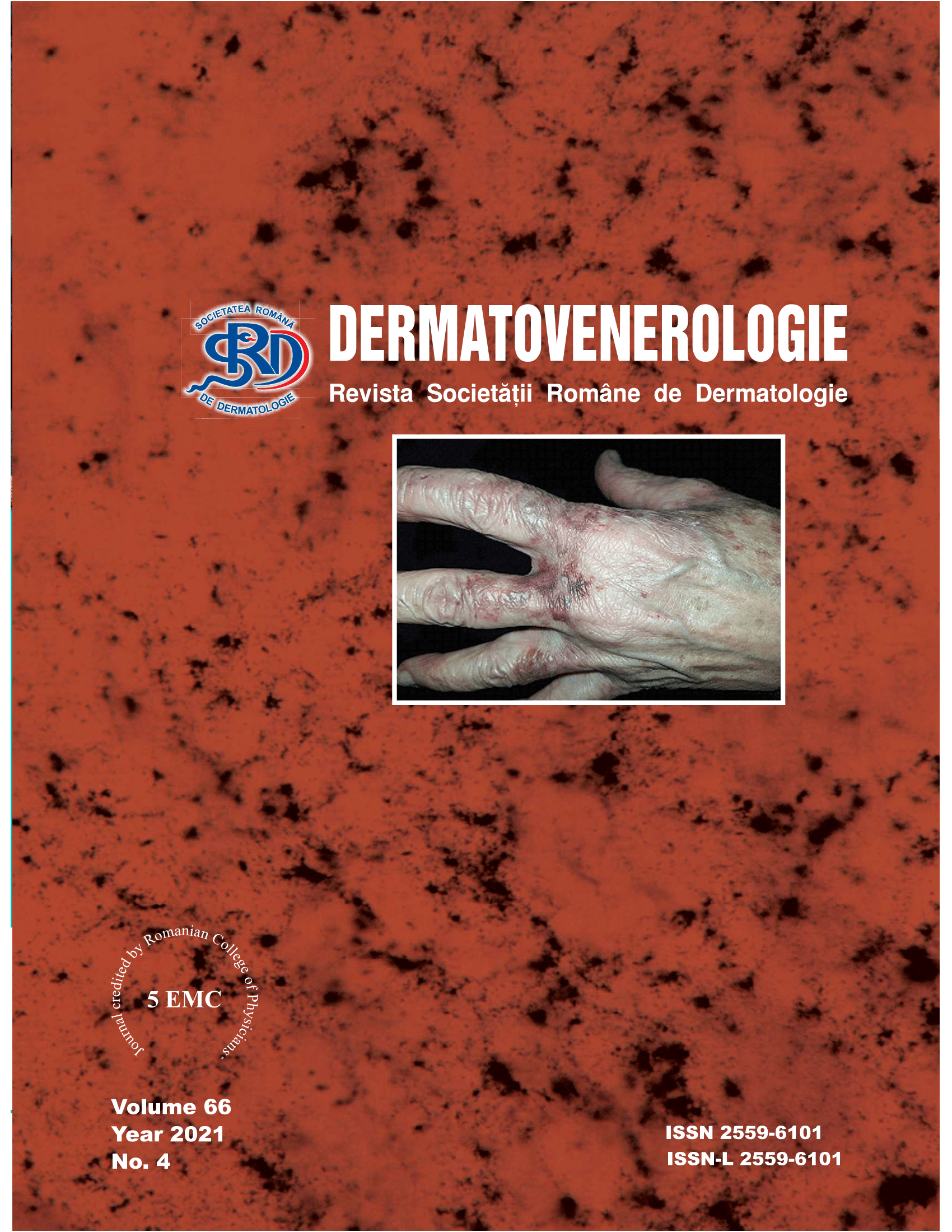Summary
Introduction. Epidermal growth factor receptor inhibitors (EGFR-I) are increasingly being used in the treatment of colorectal cancer, but not only. These drugs generally have good curative efficacy, but their skinmucosal toxicity is recognized. We present cutaneous iatrogenic manifestations in a patient treated with Panitumumab (Vectibix) for stage IV colon cancer.
Case report. A 71-year-old patient attended the Dermatology Clinic of Craiova in august 2021 for a papulopustular rash, disseminated on the face and anterior thorax, the posterior cervical region and the scalp, where the existence of thick yellow-brown crusts is noticeable. The patient was diagnosed with splenic flexure colon cancer for which a segmental colectomy was performed (October 2020). Being in stage IV (cT4N2M1 with liver and lymph node metastases) palliative polychemotherapy (11 sequences) type CAPOX (capecitabine / oxaliplatin) was instituted for the period October 2020 – June 2021, then followed by palliative monochemotherapy with Capecitabine plus Panitumumab (6 mg / kg every two weeks). The papulopustular rash started 12 days after Panitumumab therapy.
Discussions. Due to the EGFR function on the skin, nails and hair, dermatological side effects are frequently seen after using EGFR-I (papulopustular rash, xerosis, pruritus, changes in nails, hair, mucous membranes).
Conclusions. The use of the new targeted therapy for oncological diseases is increasing. Papulo-pustular follicular eruptions are a complication of Panitumumab therapy, which often does not require discontinuation of treatment. Although the cutaneous side effects can be considered a biomarker for a favorable oncological result, they affect the quality of life of patients. It is important for dermatologists to recognize the symptoms and treat these manifestations to avoid discontinuation of treatment.


